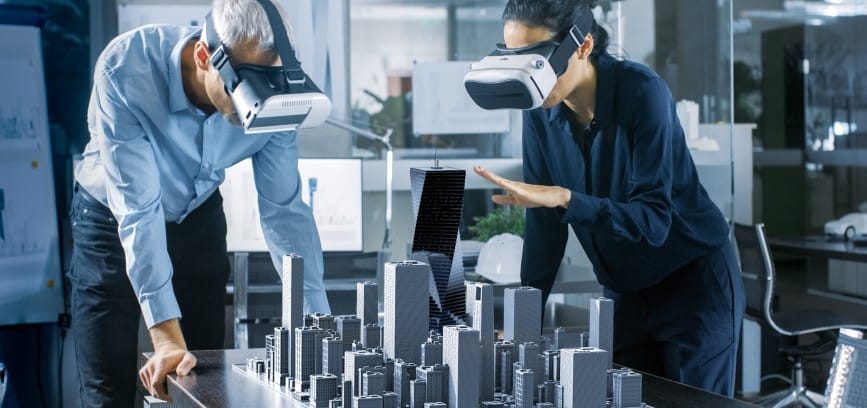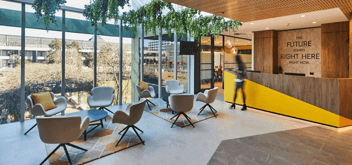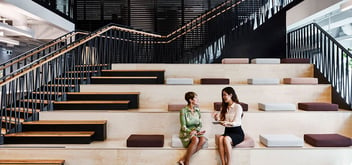The pandemic has accelerated a range of pre-existing workspace trends around health and wellbeing, flexibility, activity-based working and the demand drive for better space utilisation. With this change in working habits, the requirements of COVID-19 workplace design have come into focus.
Things like high quality virtual connective hardware which were once on the “wish list” are now office must-haves. Some of these investments are now also within reach, thanks to boosted tenant incentives.
In this article, we’ll explore the new requirements of the office as well as the incentives on offer to fund these essential upgrades.
The new office must-haves
Right now conflicting forces are pulling at the future of office footprints. One is the need for more space to accommodate physical distancing protocols. The other is the need to reduce space with more people working remotely. In a post-vaccine world, physical distancing requirements will cease to exist, but the changes to the way people work are here to stay.
While technology has proven valuable to support and maintain collaboration and interaction in the required work from home period, long term it will complement but not replace the need for a physical workplace.
Long term, workspaces will have a rationalised physical footprint, and be comprised of flexible well-equipped spaces designed to support specific employee needs. The new office will have technology built in (eg. occupancy sensors or smart lighting solutions), a strong focus on health and wellbeing, plus a workplace design that is sympathetic to the productivity needs of employees while they’re in the workspace.
Entice employees to the workspace
Enhanced productivity, no commute and the opportunity to work in leisurewear – working from home has a lot of perks the office now needs to compete with. The new workplace needs to become a destination with a purpose which entices employees to return.
The office will need to offer more to employees than just a workstation to sit at for 8 hours a day. Rather, smart businesses will create places that attract and retain their employees with careful workspace design.
Employee health and safety
The new office puts employee health and safety front and centre. Workspaces will take advantage of technology and equipment such as hands-free or easy to clean materials (non-porous surfaces) and fixtures (automatic doors and taps) to rebuild employees’ trust and confidence.
Seamless connection between physical and virtual
Remote working isn’t going anywhere, which means the new office needs to be reconfigured to accommodate technology upgrades. Meeting rooms need to be equipped for seamless video conferencing, whether that’s with better quality screens and audio or faster data connections, to ensure flawless links between those out of and those in the office.
Collaboration and connection spaces
A key purpose of the new office is connection and collaboration between employees. With focussed and deep work done from home, employees will increasingly visit the office when human interaction is required, and the workspace needs to encourage and support this type of work. In a pre-vaccine world, these spaces will need to consider movable furniture for safe distancing and acoustic treatments which aid conversation across distance.
Use tenant incentives to create your new future-proof office
According to the Property Council of Australia, Australian office vacancy increased over the first six months of 2020 for the first time in four and a half years to 9.5%. This has created a pro-tenant market, and as landlords work to keep building values steady in a turbulent time, they are offering incentives to tenants like:
- Rent-free periods
- Rent abatement
- Fitout contributions
- Changes to rent review and make good terms
While tenant incentives aren’t new, they are currently on the increase. CBRE notes that in Sydney, “incentives are on the rise to encourage leasing activity in the market, nudging up around the 30% mark.” In previous years, this sat at 18-20%. It is a good time to take advantage of the increased incentives to fund your future-proof workspace upgrades.
Wondering what other future of work trends are affecting workspace design? Check out the Future Of Work: A Progressive Leader’s Guide.



![5 signs you need a new office space [infographic]](https://www.axiomworkplaces.com.au/hs-fs/hubfs/Imported_Blog_Media/5-signs-you-need-new-office-space.jpg?width=352&name=5-signs-you-need-new-office-space.jpg)


